

The first thing to note about horse hair is that it is not available in standard colours. The hair itself is translucent, most light passes through it, so colour can vary according to lighting conditions.
Add in that each horse is different and hair varies in colour within any given tail, not just in piebalds and skewbalds. This often means we can't be sure of what actual colours we get until the mane and tail are cut and fitted. Even black, under strong light is heavily tinged with dark chestnut in most cases.
We aim to offer choice, but the boundaries between selecting each colour are a gradation, not absolute entities. To help in the selection process, we have some close up pictures of the main hair colours and some notes about fitting them.

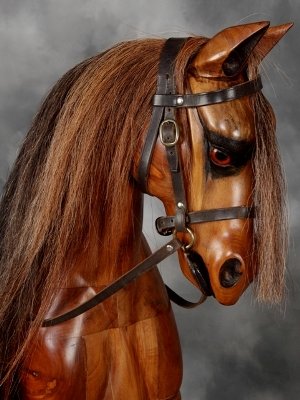

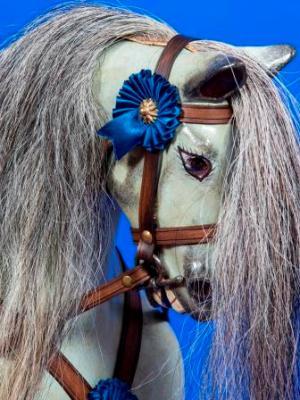
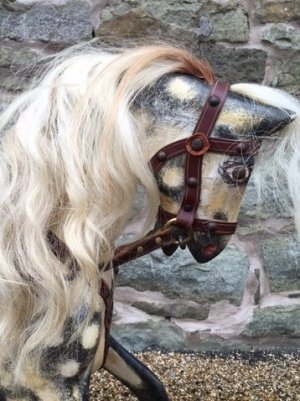

Black is the most straight forward colour, but as mentioned it can have hints of dark chestnut in close up. This has not been a problem for most applications, in fact we have only had one customer, a furniture restorer, who needed his hair to be totally black.
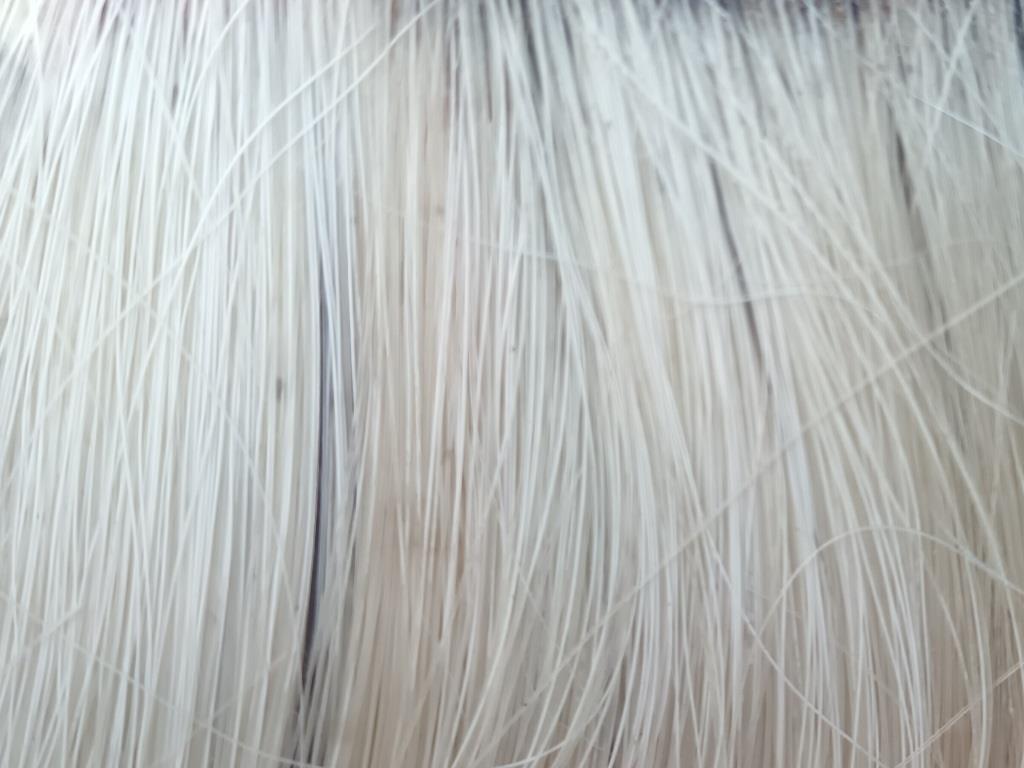
Blonde can gradually vary by degrees to be white, grey or even chestnut. Stable kept horses can have almost golden tails (they wee on them!). Generally real white is only found in piebalds, a hint of chestnut we class as strawberry or roan.
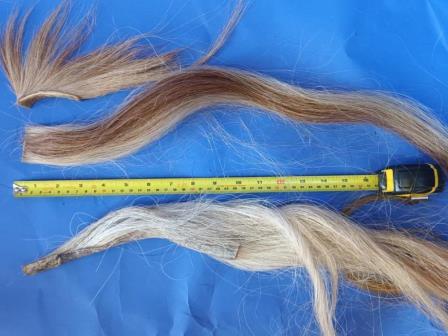
Strawberry or Roan, Chestnut and Dark Chestnut are all shades of chestnut.
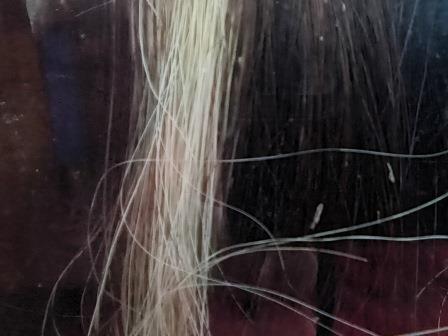
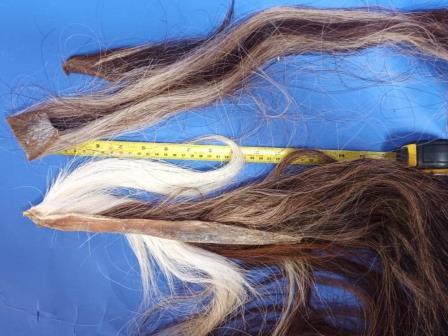
The transition of colours in these varieties is usually quite sudden. However it white usually only appears at the bottom of the tail, though can run up the tail underneath. This means that using one of these hides can result in a white tail and black or chestnut mane, or vice versa.
A solution here is to cut the mane into shorter strips, say 3-4", so the colour repeats along the mane. Likewise the tail might be in two parts to get that mix.
Finally Drizzle in a mixture of everything, sometimes a cheaper alternative to grey, which is hard to source, either through some hairs being grey or the mix of chestnut, black and blonde producing a hint of grey.
Please note, getting greys is difficult at the moment, I can offer piebalds, which are highly variable mixtures of black and white, cut well they make passable alternatives to grey. Slightly less grey, as it where, are "drizzles", essentially black with flecks of chestnut or blonde in them. Like I mentioned, every horse is different, so feel free to contact me
Coming from living animals, hair colour can vary in detail. Generally we provide tails to match the example photographed. However if you are looking for something different, we can usually find tails with combinations of the main colours described. Beware however that how such tails "cut" requiries some experience.
Piebalds for example usually run from white/blonde down to black, on some tails this can cut as a black tail and white mane, although we try to source piebalds that show some graduation from one colour to another.
On a tail the hair length increases down the hide. The shorter hair at the top is usually cut to make forelocks, the bottom few inches are cut to make tails, as the hair is longest here. The middle part therefore goes into making a mane.
Generally about 1" width is needed to make a mane or forelock piece. This thickness depends on the size of the rocking horse and length and thickness of the hair. The hair on the immediate sides of the tail may be shorter and is best trimmed off if a longer looking mane is desired.
On larger tails it may still be possible to cut up to three lengths all about 1" wide down the tail. Depending on hair length and any colour variation a rocking horse mane may be made up of several lengths added together. A large tail with long hair may easily provide two or even three tails, each should be cut full width from the bottom of the tail, about two inches long.
A very sharp craft knife is essential and a hard board or surface to cut on. The hide needs to be softened by soaking in warm water overnight. Start by scoring the underside where you want to cut. When you then go to complete the cut, try and lift the hide off the board you are cutting on as you cut through, so as not to slice off the hair on the other side. Cutting the tail lengthways is not so critical as the hair is running in the direction of the cut rather than across it and so tends not to get sliced off. Fit the hide whilst still wet and soft, as it dries it will harden and take to shape of the surface it has been secured to.
Tails are fitted by wrapping the hide round a tapered dowel and inserting in the hole in the rocking horses rump for this purpose. Selecting a suitable sized dowel can be trial and error as it depends on the thickness of the hide itself and the size of the hole. Ideally the dowel should go nearly all the way in with a moderate amount of tapping. A loose fit will invariably come out , so take care to get a firm fit. As the rocking horse is made of blocks fitted together, care is also needed to ensure that the dowel does not force the blocks to open. Any fine gesso cracks appearing in this area are a sign that the dowel has been pushed in too tightly.
Generally a firm fit should be sufficient, as the hide dries and hardens it will be quite secure. However many people like to tap a thin nail in through the dowel to secure it into place. A small hole should be drilled into the dowel for this purpose beforehand, as dowel tends to split when being nailed.
Whilst still soft and wet the hair tends to be loose in the hide. Allowing the hide to dry and harden, about 3/4 weeks, is essential before any grooming can be carried out. Hair loss can be expected, especially during this period, but this should be minimal.
Whilst occassional grooming is part and parcel of rocking horse play, it should be as gentle as possible. Generally a mane should last up to twenty years or more, though the degree of thinning is an asthetic judgement on any future replacement.